4. Cantharis 30 CH: This homeopathic remedy is great for burns of almost any type, including sunburns. You can use this in conjunction with Aloe gel or by itself. This would be a good choice if you’re concerned about your child trying to eat the aloe gel once applied. This remedy, like Aloe gel, also relieves pain and helps promote healing. 5. Apis 30 CH: This homeopathic remedy is excellent for bee stings in particular, but can be used to treat other stings and bug bites as well. Generally helps with reducing swelling, pain and heat. Especially helpful for swelling around the eyes when the eyes are becoming too swollen to open the lids. Caution: If someone in your family has an anaphylactic allergy and they require an epi-pen, do not carry Apis in place of the epi-pen. .This is by no means all the various natural remedies you could use for these situations, nor is it all the possible situations you could potentially encounter this summer. However, this is a good place to start to cover a lot of the common issues that could occur. If you’re not familiar or comfortable with the use of any of these remedies, always check with your Naturopathic Doctor or other similarly educated health care practitioner before use.
Note: Talk to your Naturopathic Doctor today about getting assessed and treated if needed, and as always talk to your health care provider before beginning any new medication or supplement. This information is not meant to replace the advice/guidance of a medical professional, nor should it be acted upon by individuals unsupervised by the appropriate healthcare provider.
0 Comments
 This is a very common question I get asked whenever I introduce myself at a workshop or someone just finished reading my card or website. The running joke in my family is I had to pick some of the more ‘obscure career paths’ available just to be different. However, in all seriousness becoming a Doula as well as a Naturopathic Doctor was like fitting together two puzzle pieces when I had no idea that there was a possibility of finding that missing puzzle piece. So what is a Doula anyway? I asked my classmate one Monday when I was still in Naturopathic college. She was telling us about the amazing weekend course she'd just finished. Well it comes from the Greek, meaning a woman who serves. The term ‘Doula’ was used to describe the role of the woman or women who attended births. In some cultures, women would give birth either by themselves or with the support of other women, and those who did have attendants, tended to have better outcomes. I was fascinated! I had only known about midwives as the 'alternative' to doctor attended births in hospitals. I didn't know there were other birth professionals out there, or that it was something I might consider doing. I had considered midwifery as a career prior to choosing Naturopathic Medicine, but once that choice was made I didn't think I could meld the birth world with Naturopathic Medicine in such a complementary and harmonious way. Once I started my own journey into becoming a doula I realized that today, the term doula is a bit more recognized and is becoming more and more common place every day. A doula is now recognized as a trained and experienced professional who provides continuous physical, emotional and informational support to the mother before, during and after birth, as well as some of the postpartum period. The primary role being as a: support and resource for health and birth care. They do not constitute a replacement for a midwife or other healthcare practitioner, but are a complimentary form of healthcare for the mother and baby. What really intrigued me was the amount of research that showed how much of a benefit having a doula present provided to mom and baby. Studies have actually shown that when doulas attend births, labours are shorter, have fewer complications (like c-sections), babies are healthier and they breastfeed more easily (Hodnett et al., 2011). Even though our primary concern is for mother and by extension the Mom and baby dyad, we’re also there to help the rest of the family too. Don't worry Dad, we didn't forget about you. Hodnett et al., (2011) shows that parents who receive support can:
Having someone else present during pregnancy and birth who can help you navigate all the vast amounts of information and work with you to advocate for you and with you only increases your chances of having the best possible birth experience. My clients who work with me also get the benefit of my Naturopathic knowledge and skills. Being a Naturopathic Doctor and Doula allows me to offer so much more complete care to the families I work with, and they often elect to continue care with me as a family after the baby is born. The birth location that can impact whether I am able to utilize all my tools, but no matter the circumstances, the end goal stays the same: for Mom and baby (and family) to have the most positive start to their lives together. Have questions about doulas or whether having a doula involved in your birth is right for you? Feel free to contact me by email or by phone. I also still have a few spots left for the summer on my calendar if you’re still looking for a Doula to join your birth team. References: Hodnett ED, Gates S, Hofmeyr GJ, Sakala C, Weston J. Continuous support for women during childbirth. Cochrane Database of Systematic Reviews 2011, Issue 2. Art. No.: CD003766. DOI: 10.1002/14651858.CD003766.pub3.  Back to School Nutrition Check Now that school is back in session it’s also time to start packing the lunch box again! September is a great time to re-evaluate our snacking and lunching habits. It’s been a little while (the whole summer perhaps) since lunches have been packed daily, so there is no need to feel guilty about all the sugar or processed junk that’s crept in there over the past year. Think of the new school year as starting with a totally clean slate. Starting off right makes all the difference When do you usually pack the lunches? Do you do it yourself or are the kids old enough to be involved in the process? You may be wondering why I’m asking these questions. The reason is I’m trying to help you figure out your routine. If your family is trying to get breakfast down and lunches packed and everyone out the door in world record time first thing in the morning, that’s going to affect your choices. If you feel rushed, you’re going to grab the foods that take the least amount of prep, which will likely leak into your grocery shopping down the road, and eventually you have lots of sugar filled snacks filling your cupboards. If on the other hand, you find some time after dinner before everyone goes to bed to prepare the lunches for the next day then they’re sitting in the fridge waiting for you when you get up in the morning. Now doesn’t it sound much nicer to only deal with one meal in the morning? Another great way to spend time with your kids, and educate them on nutritious food choices is to get them involved in the lunch making process. Studies have shown that parental modeling of good food choices, coupled with getting kids more involved in food preparation and choosing what they eat increases the likelihood of them making healthy food choices later in life (this means even when Mom and Dad aren’t around telling them to eat their peas!). Not to mention if the kids are the ones choosing their lunch then it should mean they eat it all at school, instead of bring half or more of it home. What to pack When pack lunches you want to be mindful of what exactly is going into it. Ideally, you want to incorporate all the major food groups: fruits/vegetable, grains, dairy and protein. For example, a sandwich of whole grain bread, almond butter and banana with an apple and a few slices of cheese would include something from every food group. If you’re going to leave a group out of lunch, aim for grains or dairy over fruit/veggie or protein. In North America today, over 70% of people are not eating their recommended 5-10 servings of fruits and veggies a day. Growing children need protein, it helps to fuel their day and keep them feeling full for longer. If you’re looking for some ideas the following websites give some good suggestions: 5 dollar dinners and Weelicious. I found these websites quite quickly by doing a simple search for ‘lunch ideas’. Don’t forget the internet is an almost bottomless resource when you’re running low on ideas.
Now, I didn't touch on dietary sensitivities such as gluten or dairy. For the most part, people who have these issues are aware of them and have made the modifications already. However, if you are having GI upset or other similar problems and you suspect a food sensitivity then you may want to consult with a Naturopathic Doctor. 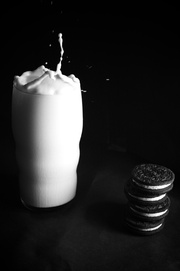 Building Strong Bones Takes More Than Just Calcium One of the most common concerns I hear from people when they would benefit from avoiding dairy products is the fear of missing calcium. Calcium is an important mineral, but to build strong bones and healthy teeth it takes more than just calcium to achieve it. Also, dairy products, like cow's milk, are not the only source or even the best source of calcium. Foods with Calcium Food sources: Tahini or sesame seed butter, almonds (powerhouse of calcium), salmon and sardines (with bones), soy, navy beans, blackstrap molasses, amaranth, broccoli, and kale. Almost all leafy greens are high in calcium. Nuts and seeds, deliver more calcium than milk (and usually more absorbable because they’re often raw). Sesame seeds offer 2200 mg calcium per cup vs 228 mg of calcium per cup of milk. One tenth of a cup or 1 ½ tablespoons of sesame seeds, would be the same amount of calcium as 1 cup of milk. Another note on milk, it loses 50% of available calcium through pasteurization. Low fat and skim milk offer even less because the milk fat is used for transportation and absorption of calcium. Making Healthy Bones Main minerals needed for bone building: calcium, phosphorus, magnesium, boron, and manganese, as well as vitamins A, D, C and B12. The hard part of bones store calcium and phosphorus, the bone marrow in the middle makes red blood cells (RBCs) and immune cells, which are made of fat that is stored for energy. The bones are made of a matrix, which is 25% water, 25 % fiber, and 50% mineral salts. The mineral salts of calcium, magnesium, fluoride, and sulfate are deposited between the protein fibers of collagen, and crystalized into salts, making the bone hard. If bones are too mineralized they will become brittle and easily break. In order to make good strong bones, we need all of these things in our diet as well as a good amount of physical activity. The stress of muscles and tendons placed on bones from movement is integral to the balance of building bones. The matrix is in a constant state of building and breaking down, and this process is only performed properly when ALL the building blocks and the right conditions are in place. Foods to Avoid Just as there are good food sources for calcium, there are also foods to avoid. The following foods either decrease absorption of calcium or increase the excretion of calcium: o High caffeine coffee, tea, soft drinks, and chocolate o Sugar is similar to caffeine and decreases the amount of phosphorus in the blood o High phosphorus intake from meat, grains, and soft drinks can take calcium from bones. Phosphorus and calcium need to be in a certain balance to have a positive effect on bone mineralization. o Salt also has similar effects to sugar and caffeine o Low Vitamin D can lead to low levels of calcium o A high fiber diet (with most fiber coming from wheat) can lead to lowered calcium absorption as fiber binds calcium and is excreted from the body o Protein in excess depletes calcium substantially. Too much creates an acidic environment requiring alkaline minerals like calcium to re-establish balance. Junk foods, refined foods, and most cooked foods also have this acid forming effect on the body. Protein also acts as a diuretic in the body, causing the kidneys to send calcium and other minerals out in the urine. A Note about Infants and Children: To help decrease some of your fears for baby, they start off with a calcium store of about 30 g that they get from you mostly during the 3rd trimester (approximately 200-350 mg a day). You can recover most of this loss within a few months following the finishing of nursing by following a calcium-rich diet. Whether you're breastfeeding or formula feeding getting enough calcium is important for you and baby, and dairy is not the only place to find it. General guidelines for protein: There is approximately 0.9 g of protein per 100 mL of breast milk and as breast milk intake decreases, protein content increases. It can be difficult to tell how much the baby is drinking in a day, but generally they get what they need. For formula fed babies, look at the label on the formula. If you're concerned about calcium or the state of your bone health then talk to your Naturopathic Doctor today about putting together a plan that addresses your individual needs. References: Phillipson-Webb, L. 2010. Sprout Right: Nutrition from Tummy to Toddler. Penguin Canada. Romm, A. 2003. Naturally Healthy Babies and Children: A Commonsense Guide to Herbal Remedies, Nutrition, and Health. Celestial Arts. Skowron, JM. 2009. Fundamentals of Naturopathic Pediatrics. CCNM Press. Print. 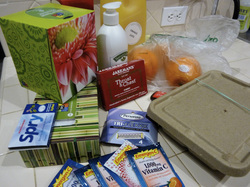 We are seeing more people, especially children, with allergies these days. There are several thoughts about why this is happening, but overall it’s generally described as a hypersensitivity or oversensitivity of the body to an external stimuli. One such theory referred to as the 'hygiene hypothesis' proposes that many children do not get sufficient exposure to a wide variety of microbes, and as result of growing up in an extremely clean environment devoid of microbes the body does not learn how to modulate the immune response effectively. Thus creating a situation where later exposure to a substance causes a hyperactive response, or allergy. There seems to be some credibility for this theory since the significant increase in individuals suffering from allergies has been mainly in the western hemisphere, and we have not seen a corresponding increase in other parts of the globe. However, as more countries become more affluent and the number of people below the poverty line decreases we are seeing an associated rise in atopic conditions such allergy and asthma there as well. In the US: · Number of people in the U.S. who have either allergy or asthma symptoms: one in five. · Percentage of the U.S. population that tests positive to one or more allergens: 55%. Internationally: The prevalence of asthma in different countries varies widely, but the disparity is narrowing due to rising prevalence in low and middle income countries and plateauing in high income countries. Symptoms: · Postnasal drip · Sniffling · Dark circles under eyes (allergic shiners) · Puffiness beneath the eyes · Restlessness · Fatigue · Poor sleep · Headaches · Behavioural problems such as irritability, hyperactivity, poor concentration, whining, and pickiness about food Chronic allergies, especially those that cause allergic rhinitis, a persistent inflammation of the mucous membranes lining the nasal passages, can lead to constant head congestion, decreased hearing ability, reduced concentration, and difficulty remaining alert. Children with allergies may frequently feel tired and irritable. Hyperactive behavior may also emerge as a result of allergies due to nervous irritability from chronic inflammatory response or the need to keep moving to stimulate endogenous adrenaline supplies. While a tendency towards allergies may be inherited, the extent to which they manifest may have more to do with dietary, emotional and environmental factors than genetic factors.
Suffering from allergies can be a very irritating experience. If you or your child is suffering from allergies, it is best to take them to a Naturopathic Doctor who can perform a proper assessment and form a treatment plan that will address your/your child’s needs. Always speak to your health care provider before beginning any new medications or supplements. References: 1. Allergy Statistics and Facts. WebMD. Reviewed by Johnson, K. (2012). http://www.webmd.com/allergies/allergy-statistics 2. Asthma Statistics. American Academy of Allergy, Asthma & Immunology. http://www.aaaai.org/about-the-aaaai/newsroom/asthma-statistics.aspx 3. Romm, A. 2003. Naturally Healthy Babies and Children: A Commonsense Guide to Herbal Remedies, Nutrition, and Health. Celestial Arts. 4. Skowron, JM. 2009. Fundamentals of Naturopathic Pediatrics. CCNM Press. Print. |
Sarah Connors
I am a Naturopathic Doctor and Doula providing care in the Kitchener-Waterloo area. I have a passion for helping people with their health issues and improving the birth experience for Moms, and their babies. I also have a life long love affair with soccer, curling, and the alto saxophone. Archives
November 2020
Categories
All
|
Photos from Rural Royalty, manu flickr2010, Ryan Dickey, wocintechchat, huskyte77, paulswansen, Black Room Photography, harum.koh, Emery Co Photo, JeepersMedia, BrownGuacamole, wellnesswildflower, JeepersMedia, vastateparksstaff, colindunn, seelensturm, /\ \/\/ /\, 50mm.za, The Simpsons (Lee, Shirley, Luke and Rachel), AGRONAUTI, aivas14, Jonathan Rolande, winnifredxoxo, juhansonin, osseous, nan palmero, Theo Crazzolara, brianfagan, TP studio, wuestenigel, torbakhopper, anka.albrecht, Michael Stern, [-ChristiaN-], franchiseopportunitiesphotos, terren in Virginia, nateOne, barnimages.com, Dun.can, wuestenigel, @lattefarsan, amandabhslater, aphrodite-in-nyc, nutritionaldoublethink, Anne Worner, donnierayjones, mikecogh, angeloangelo, Rob.Bertholf, getaiwan, Lida Rose, matsuyuki, SurFeRGiRL30, marcoverch, amsfrank, mdaltry, nutrition education, Mike Prince, Edsel L, Neighborhood Nini, philipp.alexander.ernst, Mediocre2010, homethods, quinn.anya, Gamma Man, katerha, Eric Kilby, National Institutes of Health (NIH), rcmd_cfdfw_5_2, curtis palmer, Ray in Manila, frankieleon, Airsoftpal.com, byzantiumbooks, cchana, Brian Legate, Matt Lavin, BradHinton, monpetitchouphotography, wuestenigel, alexisjordanlewis, ByEPhotos, erix!, RLHyde, return the sun, quinn.anya, mliu92, frankieleon, loudista, Lyn Lomasi, upslon, derrickbrutel, cchana, National Institutes of Health (NIH), watts_photos, marcoverch, derrickbrutel, francesbean, weegeebored, Airsoftpal.com, Etwood, wu_135, shixart1985, Ingrid Taylar, VeritasFotografie, BioDivLibrary, emmanuelmorales1, Thanks for 1.5 Million Views!!, Will Merydith, reader of the pack, RoxyHobbs, Khanelle Prod' Medias, storyvillegirl, agromonitor, Arenamontanus, six:eleven, cote, SweetOnVeg, nenoirenediaz, lucianvenutian, markhillary, anotherlunch.com, inkknife_2000, archibald jude, rawtrigger, Imaginary Museum Projects: News Tableaus, Pavel P., Courtney Emery, Thien Gretchen, physiognomist, bark, Michigan Municipal League (MML), alberth2, Merelymel13, neofob, Care_SMC, Parker Knight, B*2


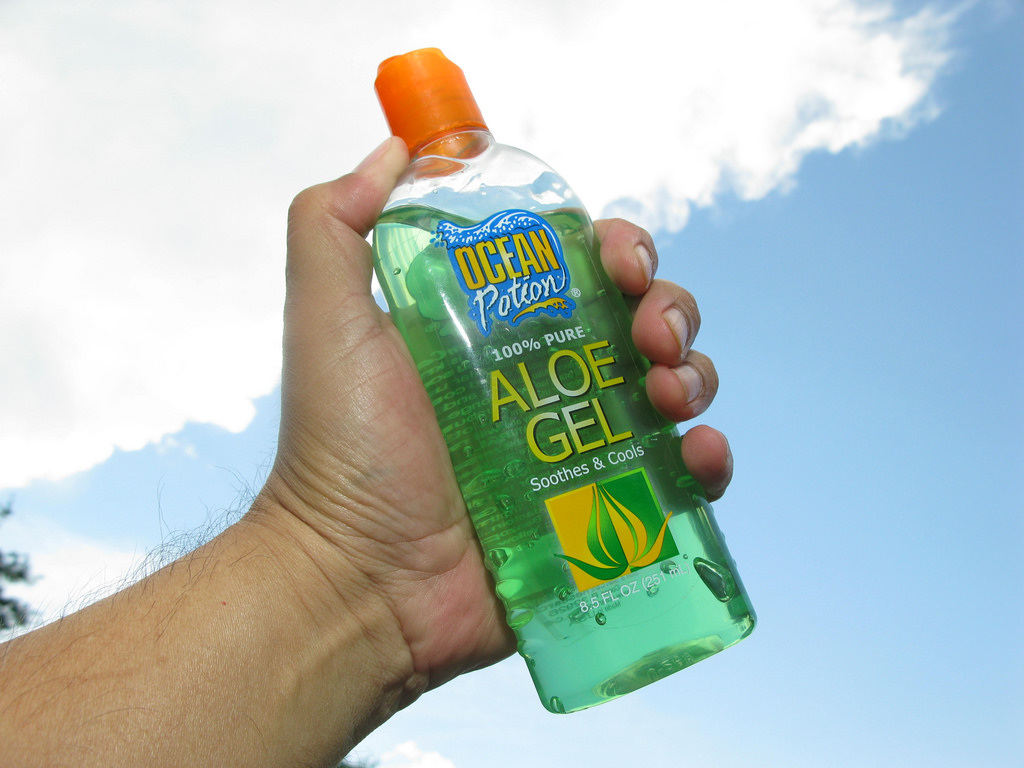
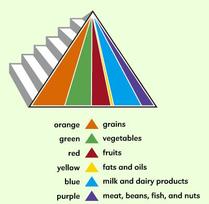


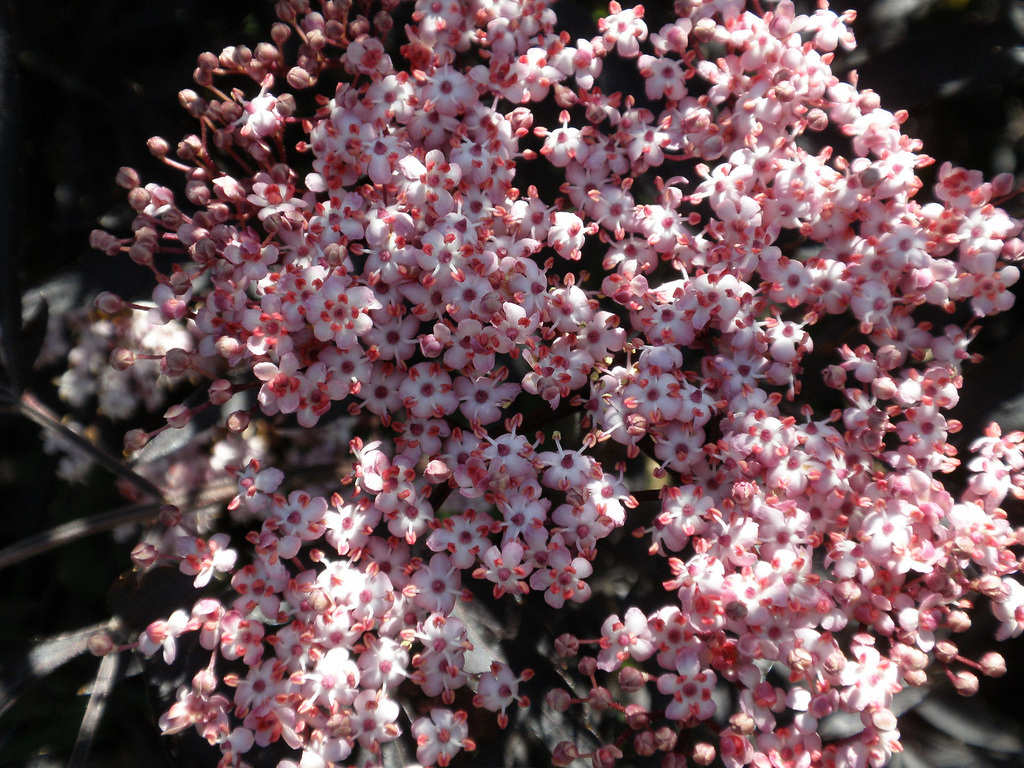
 RSS Feed
RSS Feed
